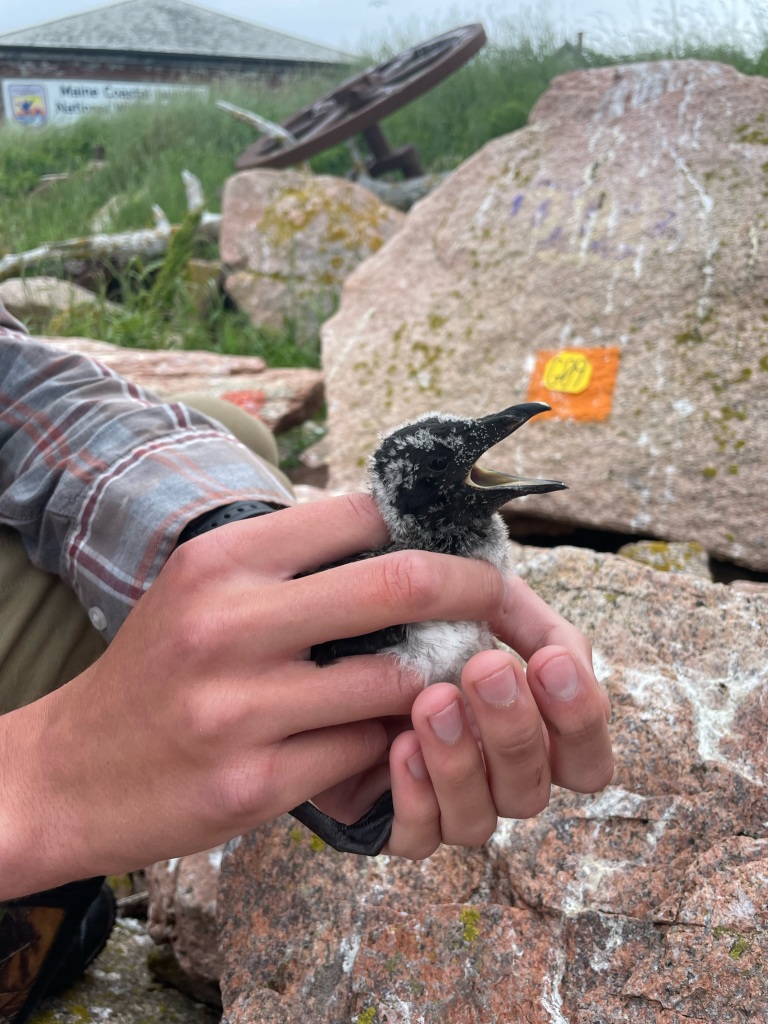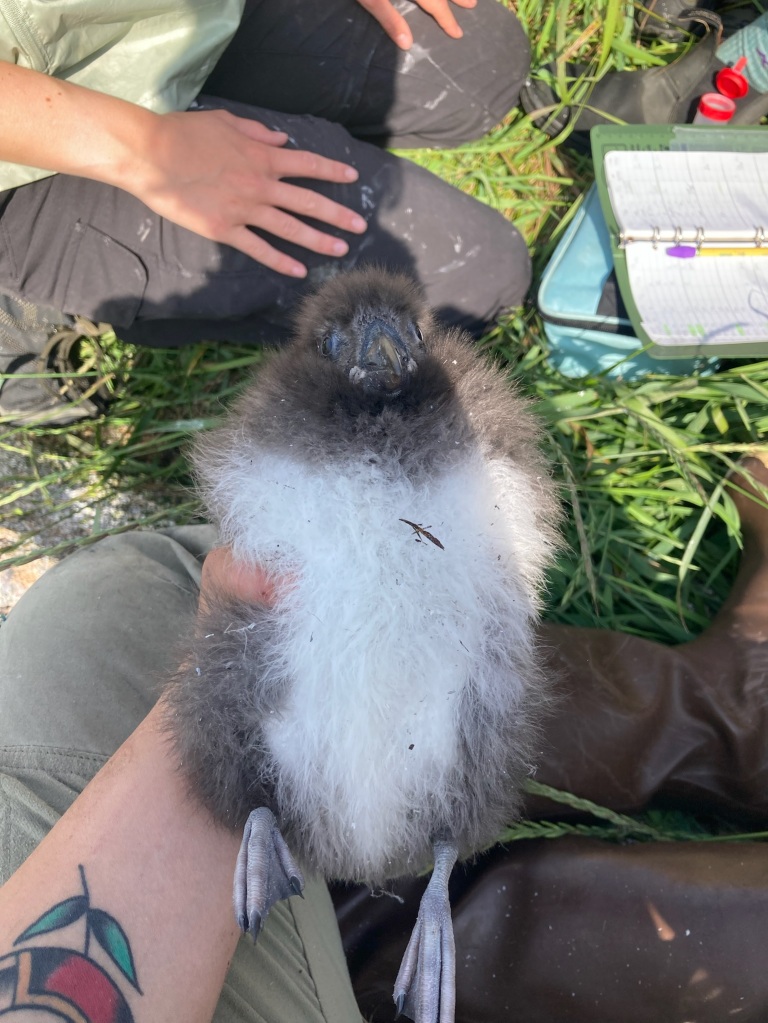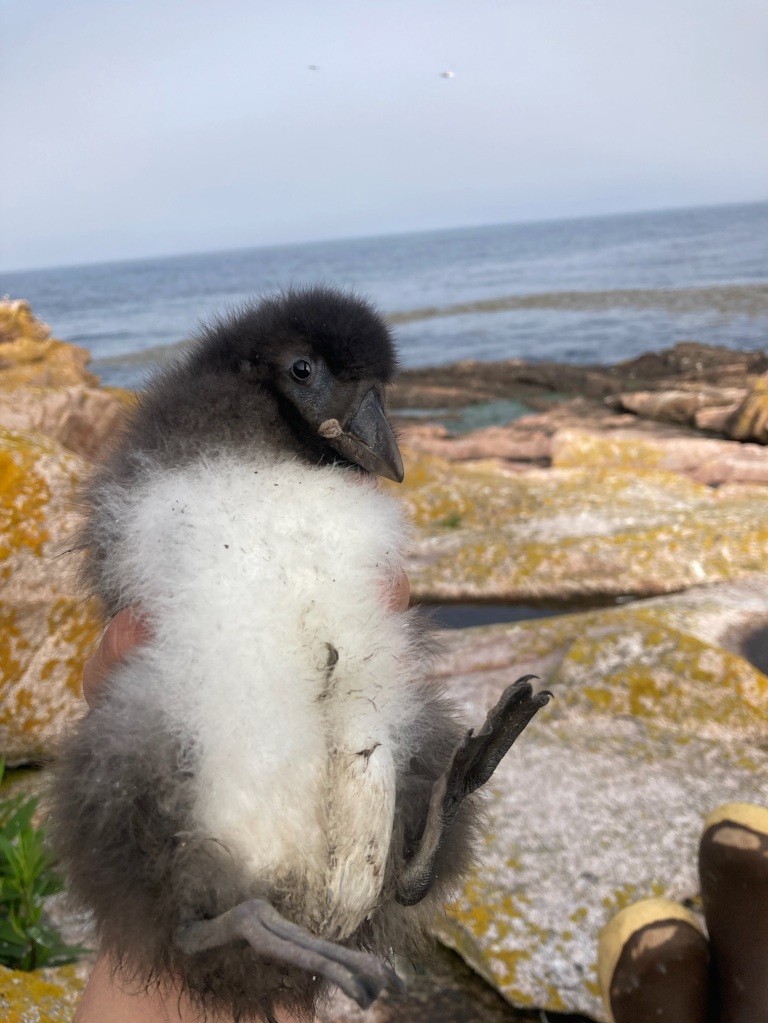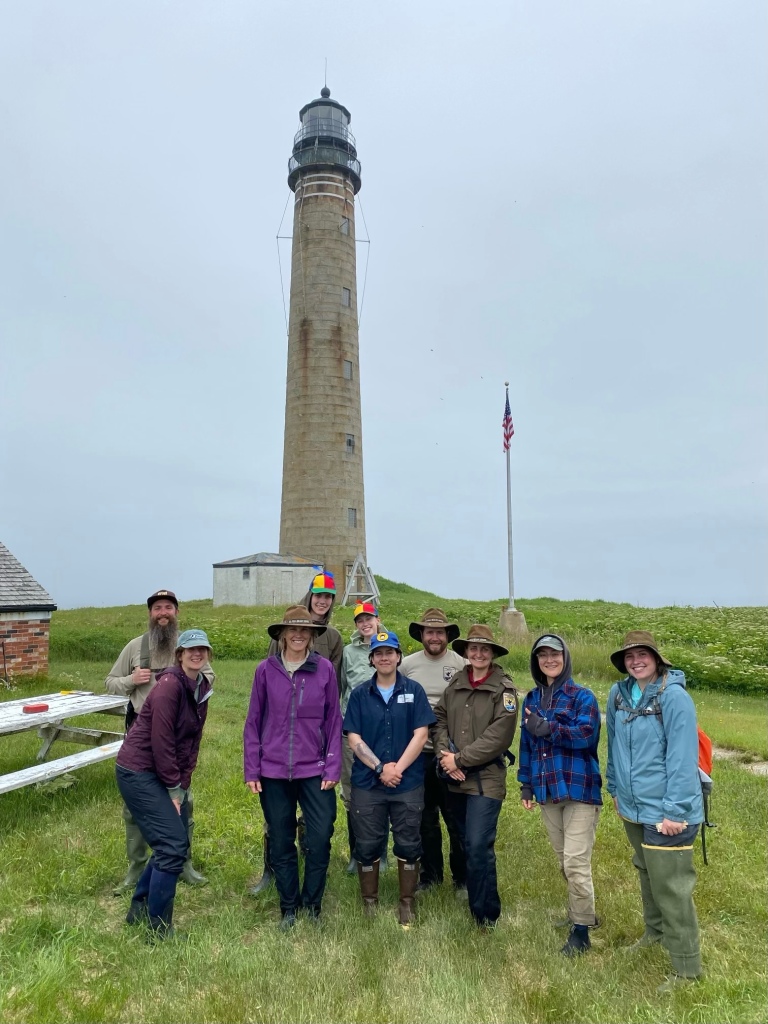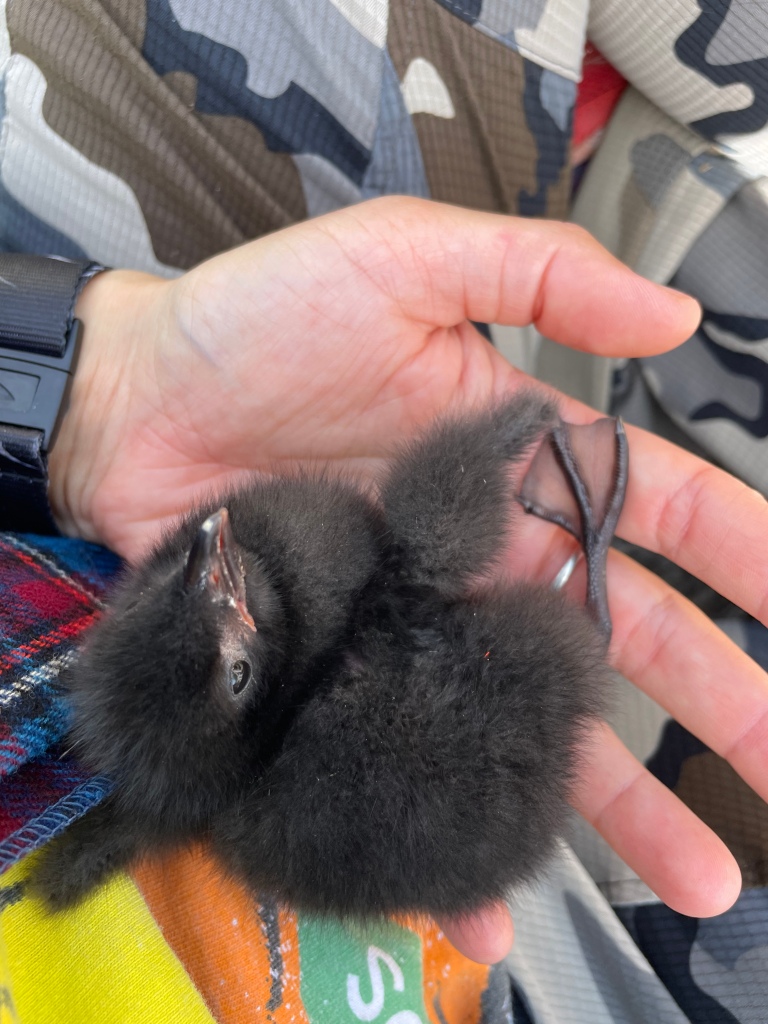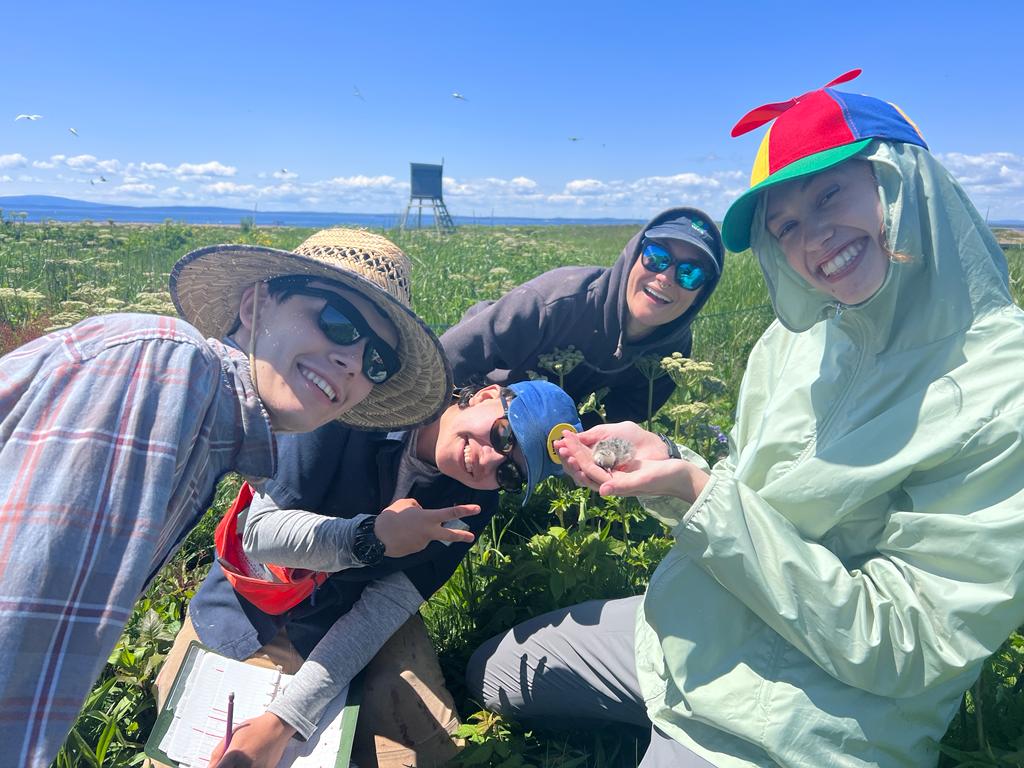Hello all, Hallie here!
First and foremost, I want to thank everyone who joined the Friends of MCINWR and Bar Harbor Whale Watch for coming out to PMI on the fundraiser pelagic! It was so nice to be able to talk to all of you, and I cannot thank you enough for all that you do. This work would not be possible without the generosity of those who support us, and for that the seabirds thank you! Now, for some island updates!
Terns
Our terns are doing really well! As I am writing this, I am seeing fledglings take their first clumsy flights at around 26 days of age! We recorded our first fledgling Arctic Tern just over a week ago now, with Common Terns following shortly thereafter. Despite sea surface temperatures warming, hake and herring were still brought back in abundance, resulting in lots of healthy fledglings! It looks like we have had a productive season for our terns, which is quite the relief after last year’s poor season. Seeing these birds take flight always makes me emotional — we put so much work into making sure that these birds have a safe spot to reproduce and seeing the first of them take flights and head out to sea always makes me choke up! It definitely makes all of the hard work, the poop bombs, the hits on the head, and the long days so worth it.
Razorbills
It has been a record-setting season for RAZO here on PMI! We have documented a total of 6 razorbill eggs, a new high for PMI! We bid adieu to two strong and healthy chicks this past week, both of which will be joining their fathers out at sea for the remainder of their chick-rearing period.
Black Guillemots
We have chicks! We are currently sitting at 61 known BLGU burrows, with around 60 healthy and happy chicks! The largest of our chicks is already a whopping 290 grams, and we are still expecting some to hatch in the next few days! We have also been working hard to recapture adults when possible and have captured a total of 15 so far, 8 of which are adults that have been banded previous years! We have documented BLGU bringing back a variety of fish this year, including four-bearded rockling and rosefish in addition to their most common prey item the rock gunnel!
Atlantic Puffins
We have pufflings — and they are already huge! We completed our first sweep of the puffin colony to document hatching on July 1st, and to our surprise found chicks larger than I expected! It seems that the puffins on PMI were early to nest as well, with our estimated first-hatch being on June 17th! We currently have documented 83 active burrows and 45 chicks with more hatching every day! Each puffling gets a series of 2-3 measurements this month, so we have been working hard to document their growth! In addition, we have captured 37 adults on nests! So far, it seems that the chicks are growing around 6-10 grams per day with our largest chick being 270 grams! It is quite the relief, again, to see healthy chicks after last year’s poor season. Micro-puffins no more, we have fat and healthy chicks that will hopefully start fledging in around 3 weeks!
Leach’s Storm Petrel
We have been working hard this year to permanently mark and label LESP burrows here on PMI! There is a lot of useful information that comes from being able to track who nests in specific burrows each year, so we have installed numbered metal cattle tags on stakes next to active burrows! We have currently found 56 observable burrows (“observable” meaning we can stick a small camera inside and see the contents of the burrow, not all of them are easy to see inside of!) that are active with adults, eggs, and/or /chicks (we found our first chick yesterday on 7/15!)) We still have around 20 more burrows to examine, but we have checked around 150 known burrows so far this season and are anticipating having around 65 permanently marked and active LESP burrows here on PMI! I am hoping that the extra work being put in this year will result in us understanding our nocturnal friends a bit better here on the island!
Avian Influenza
I have been asked this question a lot: how is the HPAI (highly pathogenic avian influenza) situation on PMI? So far, it seems that our terns and alcids have avoided it so far. We have put in a lot of extra work this year to deter the laughing gull colony, and that actually has resulted in our nest predation rates being as low as 1.2% (significantly lower than any other year previous). I strongly believe that it has had a secondary benefit of keeping our colony safe from HPAI, as gulls are vectors for this disease. Green Island, our close neighbor, has unfortunately had a lot of documented gull deaths from HPAI this year. Our team here on PMI has put in a lot of effort trying to deter gulls from hanging around, and we are doing our best to try and prevent this from affecting our birds. So far, so good.
Again: Thank you again to everyone who has supported us! I hope you all had a lovely seabird cruise with Bar Harbor Whale Watch. The seabirds and us biologists thank you tremendously!
Until next time!
Hallie, Petit Manan Island
Read Full Post »



